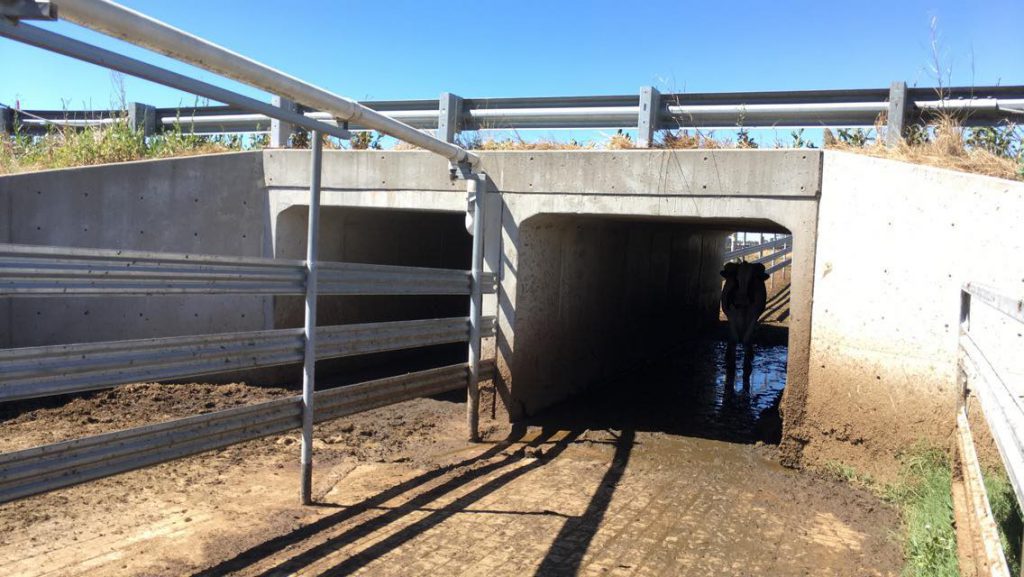In November Co. Down dairy farmer Heather Martin found out she would take part in the trip of a lifetime touring Australia’s top dairy herds.
The 23-year-old was named this year’s Holstein UK and Holstein Australia exchange winner.
She reports from Glencoe, South Australia, where she visits a top pedigree herd – a farm with eight robotic milkers and a 1,700 cow herd using 28 sweeper bulls.
Heather reports
I spent my fourth week in Australia with Benlargo Holsteins from Glencoe, South Australia, where the Tweddle family milks 330 cows in its 40:40 herringbone Westfalia milking parlour. The parlour includes ACRs (Automatic Cluster Removers) and auto ID.
The cows are managed on a feed-to-yield system. Yields are recorded from a monthly milk recording and put into the system to calculate feed.
They are grazed on grass paddocks and average an impressive 9,000L on a 305-day lactation at 3.8% butter fat and 3.5% protein.
The 200ha farm is irrigated with three pivots. Each pivot is 300m long – each covering a circle 600m wide and using eight billion litres of water per hectare. A total of 90ha are covered by the pivots.
Around 16ha of the alfafa that is grown is irrigated and the rest is left dry.
Calving is split into two roughly equal blocks in spring and autumn. Milking cows are served to AI with a bull picked through a Semex mating programme. Heifers run with a bull and calve at between 22 and 26 months.
I fell in love with a Coomboona Destry Breezer daughter from Angela Tweddle’s father’s Peach family. Members of the Peach family won Intermediate Champion at Dairy Week in 1997. She was a great bodied cow with a high and wide rear attachment.
The herd is well known on the local show circuit, competing at both the Adelaide Royal Show and the International Dairy Week.
The Benlargo team is taking four heifer calves for kids Shae and Connor to handle and compete with in the All-Breeds Youth Show at International Dairy Week.
The family has a really nice April-born Novo Ding who has nine generations of VG and Ex; she is out of Lauthority Ding who won all breeds senior champion at Adelaide royal in 2015 as a 4-year-old.
The same week I was also taken to Mark Trevilyan’s farm where he currently milks 1,700 cows – 1,100 spring-calvers and 600 calving in autumn.
He farms 2,500ac of which 1,000ac is irrigated by seven pivots. He milks through a 100-point DeLaval rotary parlour with each stall entry taking 6.5 seconds and a total of 11 minutes rotation.
Milking is at a quick pace with clusters put on by two milkers.
The cows are part of a pure-bred herd in excellent condition. Cows were AI-ed, with a Kamar heat detection system also used. A total of 28 bulls run in the herd to sweep.
He has around 140ac of lucerne which is used for four cuts of lucerne hay and one cut of lucerne silage.
I also visited to see Robert Henningson’s robotic farm.
The farm is home to Melcris Holsteins – a herd of 400 Holstein cows milked through eight Lely robots. The farm has capacity to milk up to 560.
The cows are fully grazed, only being fed on hay after milking during winter months as the ground on his farm is very wet. Cows average 2.4L a day with a maximum of 6 milkings being allowed.
Each milking only takes around seven minutes so cows are only given a small amount of grain during milking and out-of-parlour feeders are used to top up feeding after milking.
A three-way draft directs them to grazing paddocks split into ‘A’, ‘B’ and ‘C’ blocks.
Robert also built a $200,000 double underpass to allow the cows to graze across the road.
I also went to the farm run by Robert’s brother to see his herd, Teka Holsteins.
Both farms have Lely robotic calf feeders which they say work well. Robert felt it helped train the calves for the robots in the future.






